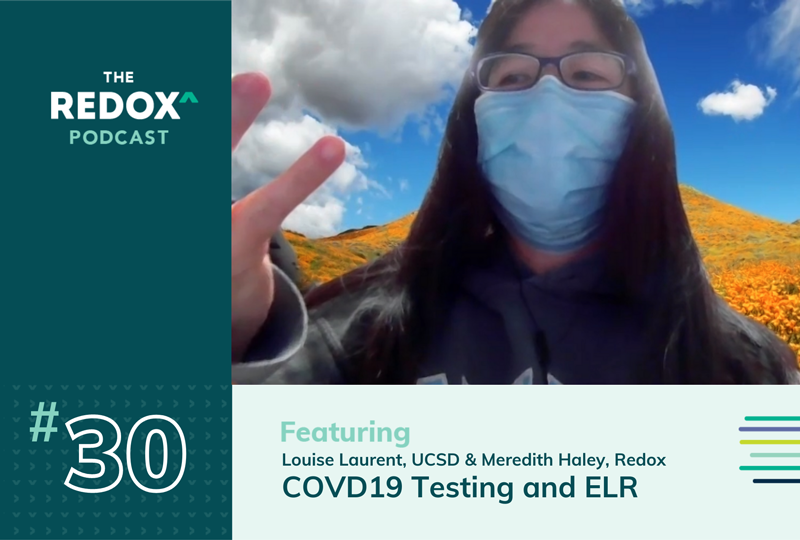The Redox Podcast 30: No beers, no bars, just ELRs: Electronic lab reporting requirements with Dr. Louise Laurent
Nov 17, 2020

In this week’s podcast, I chat with Dr. Louise Laurent about how the University of California San Diego was able to set up and scale their COVID testing protocols so quickly.
Currently Redox is working with UCSD on Electronic Lab Reporting to share with public health departments. In the pandemic, Redox has gotten *really* good at ELR, and Customer Success Manager Meredith Haley gives the quick and dirty on the ELR segment of the healthcare industry.
Below is our own quick and dirty of Meredith’s response:
What is Electronic Lab Reporting and its requirements for COVID19?
Electronic Lab Reporting is the automated transmission of laboratory findings which meet requirements for reporting cases of specified diseases. There’s around 100 conditions that are required by law to be reported to public health departments with COVID 19 being the newest on the list.
Why is Electronic Lab Reporting important?
Labs and other testing facilities are required to report contagious diseases (for a bunch of reasons, but most applicable to today would be outbreaks) so that outbreaks can be tracked and investigated. The public can be protected and educated. Preventative measures and research can be enacted. So with the growing volume of testing administered each day, manual processes for reporting these results just can’t keep up. The ability to report COVID results using an ELR process has become critical for companies looking to provide testing services.
When these results come back positive or negative that’s sent to the state so they can see how the measures they are putting into their states, their city, their county, are working. If those numbers are going up, or going down, and if they need to put stricter measures, stricter quarantines in place to manage those numbers is really where the focus has been for these health departments.
Why do labs still need help doing ELRs?
Regional labs only need to communicate with a handful of health departments, but groups that want to provide a nation wide solution run into a technical challenge.
Each state health department defines the processes and methods in which they prefer to receive results. Each state requires different connection methods and nuances in their electronic lab reporting capabilities for HL7 messages. The majority of states automate via SFTP connections, most of these are hosted by the state but some of these are hosted by the connecting party. Most are in real-time, but some are in batch files at the end of the day.
A handful of states require a HTTPS web service connection while others use a more standard VPN for connectivity. Some states have state-run HIEs that act as a front door for ELR Data. That means that they take that data and route it to the state for reporting as well as capturing it in the HIE. A few states even offer their own APIs to receive results.
So this is a lot to manage especially for labs that don’t have the existing infrastructure or resources for HL7 integrations already in place.
Most of these labs companies don’t have a bench of software developers who are sitting around making software, they have scientists who are working in these labs.
What is Redox doing to help the labs?
Redox takes away the complexities of having to understand each state's specific needs. Rather than handling 50 unique connections based on each state’s custom needs, labs can connect to a single Redox endpoint to send results nationwide via 1 JSON format. Redox manages the setup and maintenance of those various connectivity methods. Simple. Efficient.
As of today Redox is sending COVID19 results to 35 state health departments along with some city and county level departments. We’re actively installing in 8 more state health departments. All are projected to go live before the end of the year. And as we’ve built each of these connections, our teams have kept track of the reporting requirements to make it faster and easier to start sharing data.
TLDR;
We’ve put together an ELR playbook of sorts, detailing the data elements required by HHS, state health departments, and ELR standard. So Redox really takes the integration burden off the labs and translates that data into the format that each state requires.
They hit our API once and we do the grind work of connecting up to all those disparate types of connections. Again, simple. Efficient.
Listen to the episode for more!
